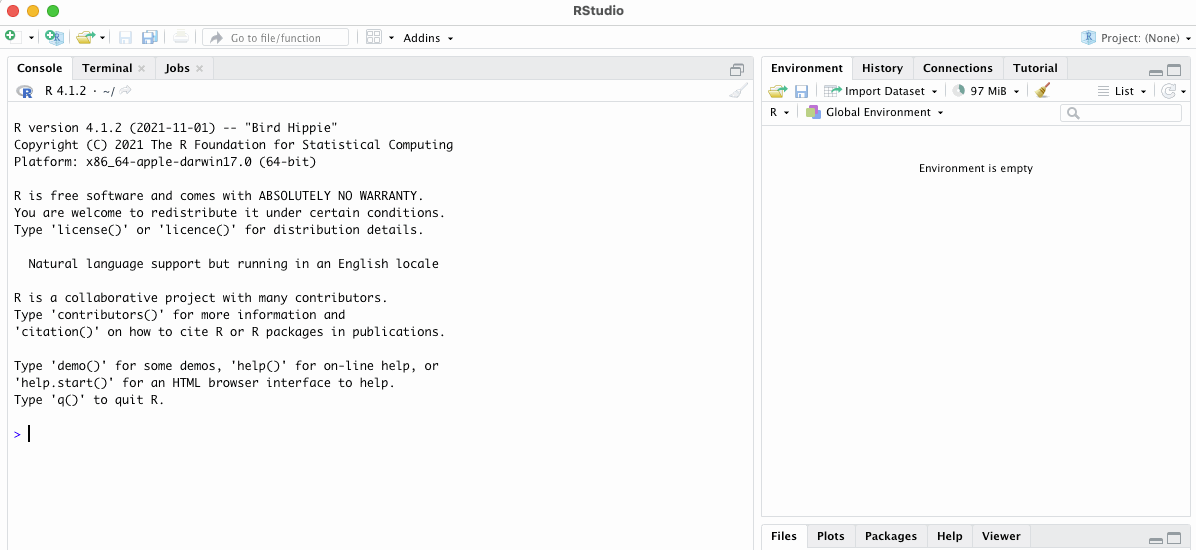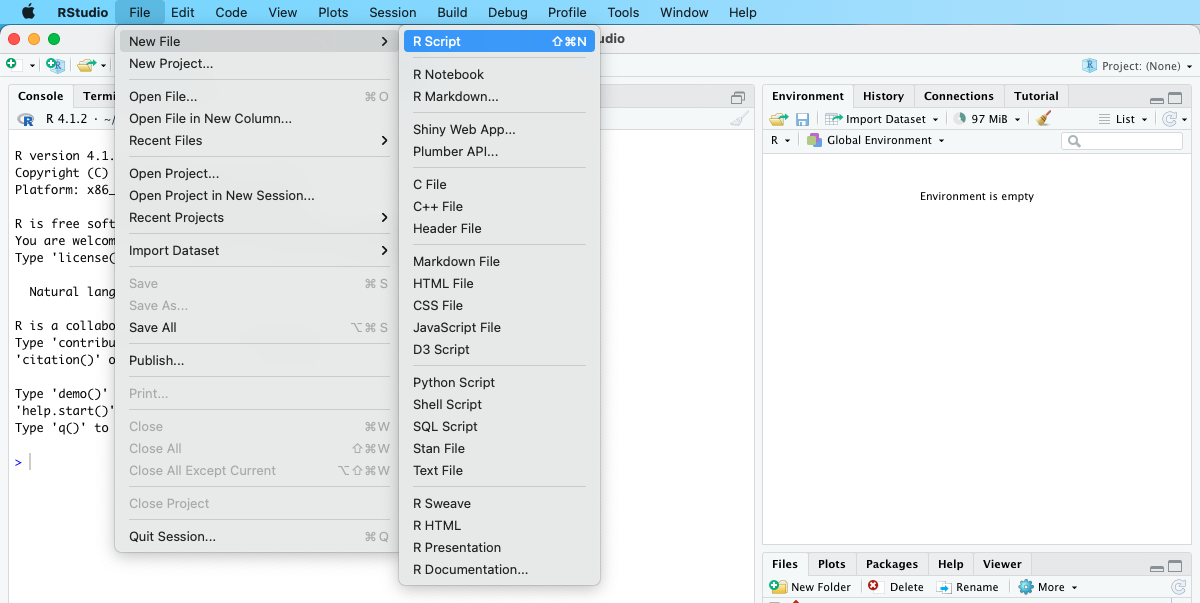Installing and running
Total suggested time: 30 minutes
There are a variety of ways to work with R, which is the actual language. For most of the projects here, we’ll be using RStudio, a popular integrated development environment (IDE) that essentially functions as a user interface for the R language itself.
On your own: Getting started with R
Suggested time: 10-15 minutes
Step 1: Install R
Download and install the latest version of R from CRAN, the “Comprehensive R Archive Network,” for your operating system:
No need to change any of the settings in the default install wizard.
Step 2: Install RStudio
Download and install the latest version of RStudio (the website should automatically suggest the version for your operating system):
https://www.rstudio.com/products/rstudio/download/#download
NOTE: If you’re on a Mac, you may have to drag and drop the RStudio icon into your Applications folder to complete the install.
Step 3: Open RStudio
To make sure everything is installed correctly, navigate to wherever your applications are stored and launch RStudio.
You may see an icon for R – we won’t actually be launching this application, since we’re using the interface instead.
On your own: R basics
Suggested time: 10-15 minutes
Starting a new script in RStudio
When you open RStudio, for the first time, you’ll see a few different panes in your workspace. The largest is your console, which you can use to directly enter commands using the R language.
Some commands, like simple arithmetic, are pretty obvious! Try typing the following into your console panel.
100 + 100
Execute the code by clicking Code > Run Selected Line(s) or with Command + Enter.

Practice executing code with a few other simple calculations.
For the most part though, we won’t be working in the console directly. We’ll be writing our R code in an R script, a separate file we can save, reload and share.
At the top menu, click File > New File > R Script to start a new script. You’ll see your blank file appear in a new pane in RStudio. Go ahead and Save As... to give it a name. You should get in the habit of saving your work often.

Commenting code
At the top of your script, write a quick comment that tells you something about what your new script does.
Starting each line with a # character will ensure this line is not executed when you run your code.
#My first R script
#Hands-on exercise on March 3, 2023
Storing variables
You can also store variables using an assignment function.
Variable types (which may sound familiar to column types we discussed in the spreadsheet module describe the nature of the data stored in each variable.
The most basic variable types are characters, numerics, dates and logicals.
current_year <- 2022
current_date <- as.Date('2022-01-10')
current_month <- 'January'
is_winter <- TRUE
You can also store multiple values as a vector or list.
primes <- c(2, 3, 5, 7, 11)
months <- c('Jan', 'Feb', 'Mar', 'Apr', 'May', 'Jun', 'Jul', 'Aug', 'Sep', 'Oct', 'Nov', 'Dec')
And you can call those values by their numerical index with the double bracket notation.
#return the third prime
primes[[3]]
#return the fifth month
months[[5]]
R has a lot of great, basic functionality built in. But an entire community of R developers has created a long list of packages that give R a wealth of additional tricks.
We’ll talk about some of those next.
For a list of common R terms and some handy keyboard shortcuts, check out the Tips and Further Reading page.